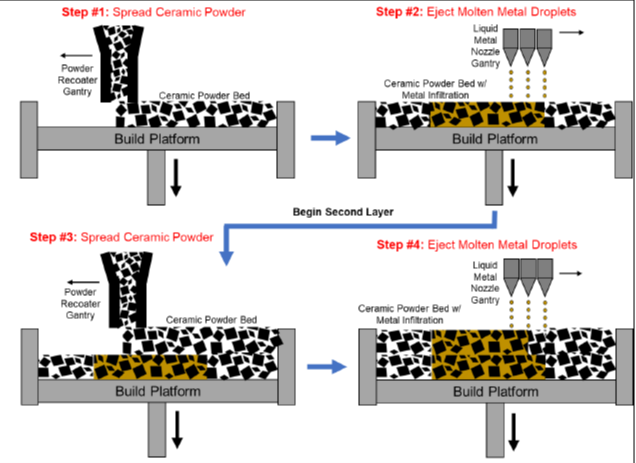Binder Jetting (BJT) and Material Jetting (MJT) are two of the seven types of 3D printing processes according to ASTM standards. BJT drops, typically polymer-based, binder on the powder to build layers, while MJT drops the material (e.g., liquid metal) onto the ceramic powder layer to be fused. BJT involves a post-sintering process that could subject the printed parts to shrinkage. While BJT is well-known for 3D printing of single-material ceramic or metal bodies, there is a need for a 3D process that can combine the ceramic and metallic phase into a single-step to create complex shaped ceramic-metal composite components.
This invention, hereby called liquid metal binder jetting (LMBJ), uses a molten metal as the “binder” that is deposited on ceramic powder, resulting in a multi-material fabrication process that includes both the ceramic and metallic phase in the same process. The simple process involves four steps:
- Spreading the ceramic powder on the main build plate
- Depositing molten metal to “bind” selected regions to be 3D printed.
- Spread a new layer of ceramic powder over the previous layer.
- Depositing more molten metal to complete the next layer of the 3D printed part.
Image Caption: Liquid metal binder jetting concept illustrating a two-layer print sequence and the associated processing step
- Value proposition: Less manufacturing costs by combining binder jetting with material jetting.
- Multi-material fabrication
- Thermal protection systems
- Hypersonic reentry shielding
- Nuclear shielding
Current stage of technology development: TRL 3


